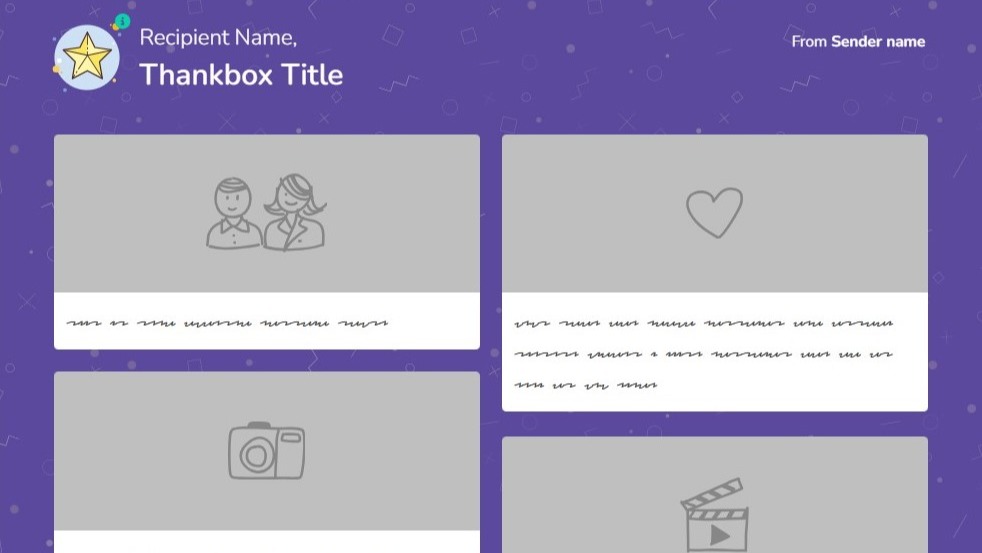We Explore 10 Best Practices for Developing a Winning HR Strategy


Around two-thirds of businesses around the world report that they are struggling to fill roles, and the battle for top talent is only getting more intense. As more firms try to retain their valuable employees, and keep them happy, a top-notch HR strategy is a prerequisite for success.
So, how do you create an HR strategy that makes a difference?
In this Thankbox article, we’ll explore the best practices for creating your very own HR strategy for your organisation. Keep reading to find out how to create a winning strategy that aligns with your business goals and helps your team thrive!
How does an HR strategy deliver value to your organisation?
Human capital is your most valuable asset.
An HR strategy is integral to your organisation because it sets the foundation for managing your valuable employees effectively. Your strategy should align your company’s goals with the skills and development of your workforce. By addressing aspects like recruitment, training, performance management, and employee engagement, an HR strategy directly impacts your productivity and operational efficiency.
In general, an HR strategy delivers value through:
Business alignment: Ensures HR initiatives directly support business objectives, maximising organisational effectiveness.
Talent optimisation: Attracts and retains high-quality employees, reducing turnover and enhancing workforce stability.
Performance improvement: Establishes clear performance metrics that motivate and guide your employees, boosting overall productivity.
Risk management: Mitigates legal risks through compliance with employment laws, protecting the organisation legally and financially.
Culture enhancement: Builds a positive workplace culture that promotes employee satisfaction and loyalty.
Cost efficiency: Reduces costs associated with turnover, recruitment, and underperformance by optimising HR processes.
Innovation promotion: Encourages innovation by supporting diverse perspectives and continual professional development.

By crafting an effective HR strategy, you can enhance your company’s culture and promote an environment of inclusivity, motivation, and respect. This is amazing for employee satisfaction and retention.
Ready to take your company to the next level? You can’t do it without an intentional HR strategy! And while you’re at it, make sure you say “thanks” to your employees with a custom Thankbox. It’s the perfect way to bring everyone together.
8 best practices for formulating your HR strategy
1. Align HR strategy with your business goals
Aligning HR strategy with your business goals ensures that human resources initiatives support the broader objectives of the company.
To do this, analyse your company’s overall vision and develop HR policies and programs to achieve these goals.
For example, if your business aims to expand into new markets, your HR strategy might focus on recruiting and developing talent with experience in international business and cross-cultural competencies. Of course, you can shift accordingly when your needs change.
2. Implement effective talent management
Managing talent effectively is crucial for attracting, developing, and retaining skilled employees who are capable of fulfilling what your company needs. You’ll need to regulate your approach from top to bottom.
Start with recruiting and hiring and work your way to training and succession planning.
By identifying the competencies needed for each role and ensuring that the right people are in the right positions, you’ll be able to optimise your workforce and drive competitive advantage.
3. Develop employee training and development programs
Employee training and development programs are essential for equipping staff with the necessary skills and knowledge to perform their roles effectively and adapt to changing job requirements.
Tailor your programs to desirable career paths and include a mix of on-the-job learning, formal training, and opportunities for professional growth. Regularly updating training programs ensures they remain relevant and valuable to both your employees and the organisation.
4. Establish a clear performance management system
A clear performance management system helps track and evaluate employee performance against defined goals and benchmarks. In your system, integrate regular feedback, performance appraisals, and recognition of achievements.

Effective performance management not only clarifies expectations but also motivates employees by linking their performance to rewards and career advancement opportunities.
5. Enhance employee engagement
Enhancing employee engagement involves creating a work environment that promotes job satisfaction, commitment, and motivation. This can be achieved through initiatives that encourage communication, collaboration, and recognition within the workplace. Engaged employees are typically more productive, contribute positively to the company culture, and are less likely to leave the organisation.
One of the most unique ways of keeping employees engaged is by celebrating each other through peer-to-peer recognition. By creating a Thankboxfor your employees, you make them feel like a truly valued member of your organisation.

To get started, customise the design with the icons and background you want. Then, include your heartfelt messages, GIFs, photos, and videos. You can even pass the Thankbox around the office by simply sending an email and getting others to contribute to a gift collection.
Teams that show appreciation for each other tend to stick together. And we make it easy for you to send your virtual card as a group.
6. Promote diversity and inclusion
Promoting diversity and inclusion involves creating policies and practices that ensure all employees feel valued and included, regardless of their background, identity, or beliefs. This includes training on unconscious bias, equitable hiring practices, and creating a culture that celebrates differences.
7. Offer flexible work arrangements
Offering flexible work arrangements can significantly enhance employee satisfaction and retention. This includes options such as remote work, flexible scheduling, and compressed workweeks, which allow employees to balance their work and personal lives more effectively.
Such flexibility can also broaden the talent pool, attracting candidates who may prefer or require non-traditional work hours or settings.
8. Conduct regular HR audits and solicit feedback
You won’t go anywhere if you aren’t always improving. Audit your strategy to help identify areas where policies may be outdated. Gather feedback from employees to get insights into the effectiveness and satisfaction with your current HR initiatives.

Together, these practices will ensure that your HR strategies remain aligned with both employee needs and business objectives.
Ready to take your company to the next level? You can’t do it without an intentional HR strategy! And while you’re at it, make sure you say “thanks” to your employees with a custom Thankbox. It’s the perfect way to bring everyone together.
Sample HR Strategy Template
If you’re not sure how your HR strategy should be structured, we put together an example for you to follow:
1. Executive Summary:
Overview of the company’s mission and strategic objectives.
Brief description of the HR strategy’s role in achieving these objectives.
2. Organisational Context:
Current business environment and workforce analysis.
Key business challenges and opportunities.
3. HR Vision and Mission:
Vision statement for the HR department.
Mission statement that aligns with the overall business mission.
4. Strategic HR Objectives:
List of specific, measurable HR objectives that support the business strategy.
Each objective should align with key performance indicators (KPIs).
5. Key Strategic HR Areas:
Talent Acquisition: Strategy for recruiting and selecting top talent.
Talent Management and Development: Plans for training, development, and career progression.
Performance Management: Methods for assessing and improving employee performance.
Employee Engagement: Strategies to enhance job satisfaction and retain top performers.
Diversity and Inclusion: Initiatives to create a diverse and inclusive workplace culture.
Compensation and Benefits: Competitive strategy for employee compensation and benefits.
Workforce Planning and Risk Management: Approaches to managing changes in workforce needs and compliance risks.
6. Implementation Plan:
Timeline of key HR initiatives and projects.
Roles and responsibilities for implementation.
Resources required including budget and personnel.
7. Monitoring and Evaluation:
Techniques and tools for tracking progress towards HR objectives.
Schedule for regular reviews and adjustments to the strategy.
8. Risk Management:
Identification of potential risks associated with the HR plan.
Mitigation strategies to address these risks.
9. Conclusion:
Summary of the HR strategy's importance to the company’s success.
Call to action for all stakeholders to support and engage with the HR initiatives.
Wrapping up
If you haven’t already developed an HR strategy, now is the time to set the tone. By developing best practices for recruiting, hiring, and retaining talent in your organisation, you give yourself the best chance to scale while faced with a competitive hiring environment.
And remember, a key part of HR strategy is giving feedback. That’s why you should check out Thankbox to send your employees online virtual cards thanking them for their efforts and complimenting them on their achievements.
It’s a memorable way to spread good vibes around the office!
Images: Cover | Asian team giving thumbs up | Man in black suit | People in law office





